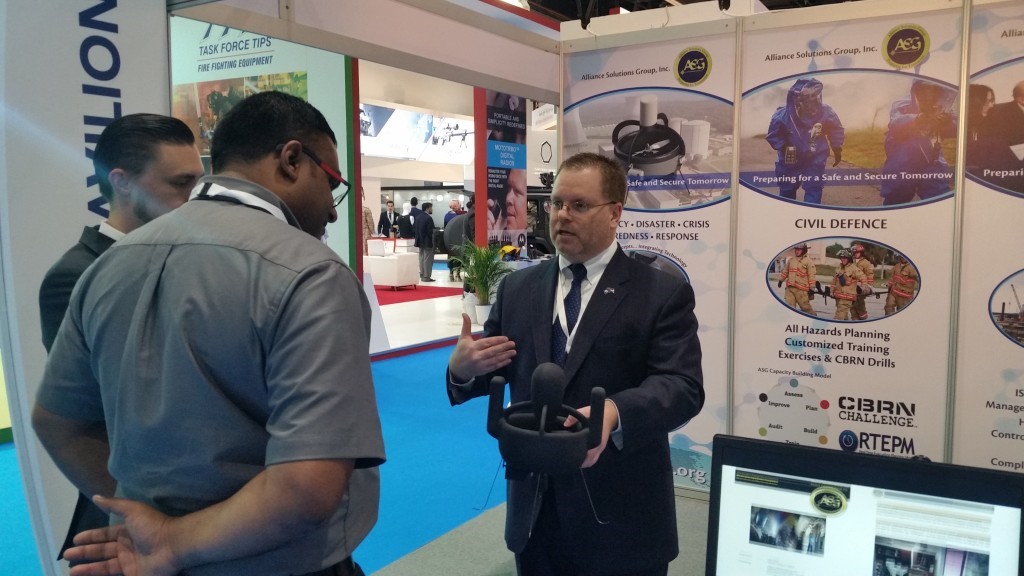Lessons learned from recent incidents such as the explosion at the Tianjin port in China port, the Daesh attacks on critical infrastructure such as the Zaventem Airport in Brussels, and the Hajj stampede in Mina, Kingdom of Saudi Arabia reveal the need for continued professional development among emergency management officials and the need to implement best practices before, during and after incidents. Emergency management involves strategic-level thought leadership with broad perspectives on integrating the right solutions to mitigate and respond to hazards. Unmanned aerial systems, situational awareness tools and sensors are some emerging technologies available but these require a comprehensive implementation plan. Emergency managers responsible for critical infrastructure and mass gatherings must continually improve their strategies and capabilities with these new technologies to protect people, the environment, infrastructure and the reputation of governments and corporations. The world notices when things go wrong, not when incidents are averted.
So, what knowledge and resources will help emergency managers address today’s complex hazard profile and evolving threats? How can emergency managers leverage emerging technologies to prepare for a safe and secure tomorrow? Here are five key take-aways from the research behind this presentation.
1. Continually Update the Hazard Vulnerability Assessment. Emergency managers are ultimately responsible for the possibilities, probabilities and capabilities. They understand how to assess risks across all-hazards and develop target capabilities needed to prepare communities and companies for the right risks. As the threat profile continues to evolve, emergency managers are responsible for monitoring and updating these assessments. With the right tools and models, this can be automated to support capability management.
2. Planning Requires Collaboration. The NFPA Standard 1620 on Pre-Incident Planning is a good starting point. It identifies the minimum that a community should do to adequately plan for incidents at fixed facilities and mass gatherings. It builds on a solid foundation that is fire centric, but calls for a collaborative approach among facility managers, operators, emergency planners and responders. Emergency managers must exhibit the leadership required to facilitate the planning process, build consensus and arrive at decisions that build buy-in throughout the community.
3. Emergency Management = Management for Emergencies. After gaining a foundation of emergency management knowledge and skills, emergency managers need to shift into management mode. This requires what Jim Collins (the management guru) refers to as “zooming out” in his book Good to Great. Emergency managers need a reliable framework that addresses management, infrastructure, operations and financial aspects of preparing communities and organizations. Without this comprehensive approach, the focus (and daily work) remains on a series of emergencies (i.e., grant proposals, buying equipment, getting contracts awarded, getting approvals, running exercises, etc.). A comprehensive framework ensures a balanced approach to tactical work while aligning strategic elements of preparedness programs.
4. Adopt a Reliable Process for Building Capacity. The benchmark 6-step capacity building cycle of Assess, Plan, Build, Train, Audit, Improve, organizes all of an emergency managers tasks into a logical, sustainable process that grows capabilities and capacities. It also helps prioritize tasks that drive improved capabilities. Before attending the next meeting or working group, ask yourself, “how will time invested in this meeting contribute to one of these 6-steps of building capacity?”
5. Understand How High Tech Products Fit into the Preparedness Framework. Unmanned Aerial Systems and other emerging technological products are not solutions. They are part of the solution. It’s imperative that emergency managers understand what else is required to build a solution when they purchase new technologies. These great products have the potential of improving decision making cycles, reducing risks to first responders, speeding the transition from response to recovery, and ensuring the safety and security of critical infrastructure and large scale events. These products must also be part of a strategy, incorporated into plans, assigned to the right people within the incident management system, supported with the right logistics, sustained through proper maintenance and budgets, trained and drilled with product users, information analysts and decision makers. Selection of the right product for the mission requires defining the mission profile, careful evaluation of alternatives, research, user feedback, life cycle cost analysis and interoperability assessments.
As emergency managers keep abreast of new technologies and applications, they must continue to participate in professional development activities and courses designed to elevate their perspectives, learn from peers, and adopt best practices. Protecting critical infrastructure and mass gatherings requires a solid framework, consistent process, the right technologies and dedicated leadership.
To learn more about how emergency managers are preparing for critical infrastructure protection or mass gatherings, attend the presentation at the Emergency Management and Business Contingency Conference on Oct 5th in Dubai, UAE, or contact Alliance Solutions Group at 757.223.7233 or +971.52.805.2282.
Don't worry, no spam here!
Keep up to date with the latest trends, best practices and innovations in the Emergency Management and Environmental, Health and Safety sectors.

